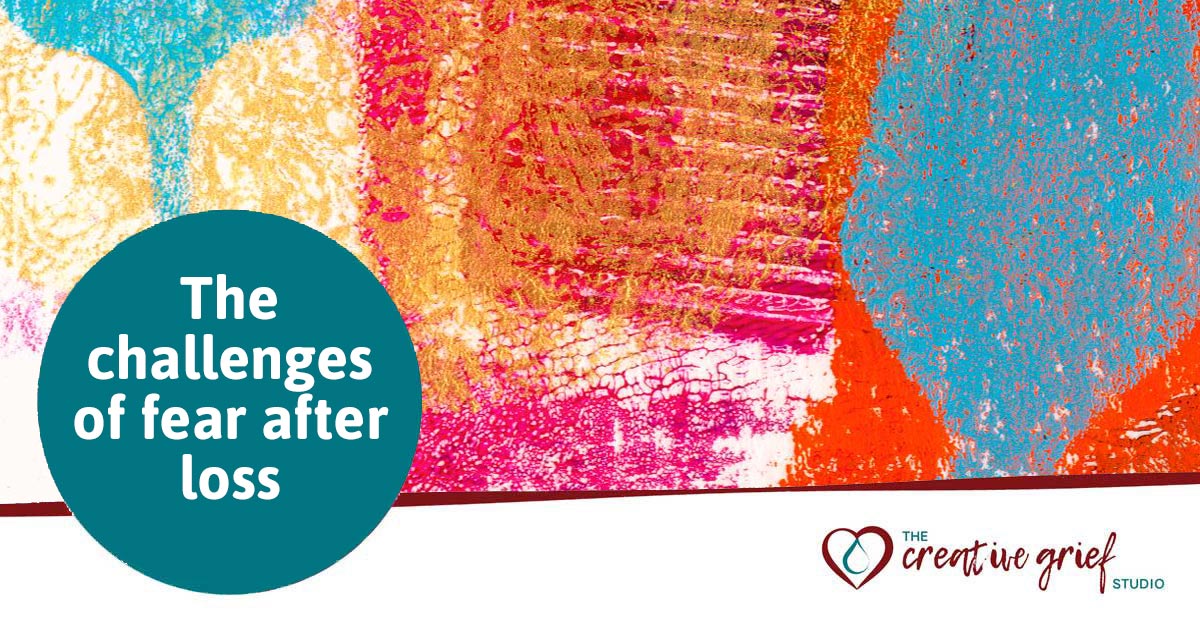Sometimes we’re asked by grief support professionals why we don’t teach Elizabeth Kubler Ross’ “5 stages of grief” model in our Creative Grief Support Certification course. One of the reasons for this is because of what Kubler Ross’ model leaves out. With its focus on identifying 5 common emotional themes that people might experience after loss, the Five Stages of Grief model has contributed to the common misperception that those are the only “normal” emotional themes when one is grieving. As a grief support practitioner (and as a person who likely has experienced your own loss and grief), you’ll have seen for yourself that there are a much wider range of emotions that grieving people encounter, need to work through, and with which they might struggle.
Grieving is a rich and diverse emotional experience
Grief is not “abnormal” if clients experience emotions that aren’t on Kubler Ross’s big 5 list! Fear, envy and jealousy, self-blame, guilt, shame, anxiety, depression, loneliness, and despair are just a few other very common emotional themes that you’ve probably helped your clients with. And then there are of course also the so-called “positive” emotions that are also very normal even amidst deep grief. These emotions go un-mentioned in the 5 stages model, and grieving people sometimes seek support for guilt that has arisen over the fact that they are noticing that they can laugh or feel a sense of peace or joy “so soon” after loss. Dr George Bonanno’s research confirms that, gratefully, it’s quite normal and healthy to oscillate between positive emotions and very difficult emotions when one is even very deep in fresh grief. And so, rather than teaching limited model of grieving, we’re teaching grief support professionals a range of wonderfully creative ways to explore with their clients, and to help their clients to articulate what their unique grief experience is like.
Fear and anxiety are common after loss
It’s probably easy to imagine how your clients might struggle with fear after loss when the loss was an unexpected and traumatic one, but it’s not just traumatic loss that can leave people struggling with fear or anxiety. The fears might be loud and obvious, or they might be much more subtle fears, and a more general sense of closing down and holding back from life. Either way, it’s worthy of exploration, and you can support your clients to restore their sense of agency and confidence in their daily life.
Shrinking fear with curiosity
Some examples of questions you could ask in order to grow curiosity and shrink fear are …
- Where has subsequent fear gotten in your way?
- When you notice subsequent fears rising, what are the cues?
- Where do you feel it in your body?
- What do you do with the noticing?
- If the subsequent fear were to become a character in a stage play, what would s/he be doing on stage?
- What is s/he wearing?
- How does s/he interact with the other characters in the play of you life?
- If you were to ask subsequent fear what s/he needs most, what would the answer be?
- If subsequent fear feels s/he is doing a positive thing, like protecting you, can you be honest with him/her about how you don’t need that protecting anymore because it is getting in the way?
- Can you give them another role to play in your life or in the stage play?
What other creative questions can you think of to support your clients in opening up new possibilities beyond fear? If you’re curious to learn more nuanced, creative, and unique ways that you can help your client to experience a sense of curiosity as they grieve, apply to join our next Certification in Creative Grief Support.

